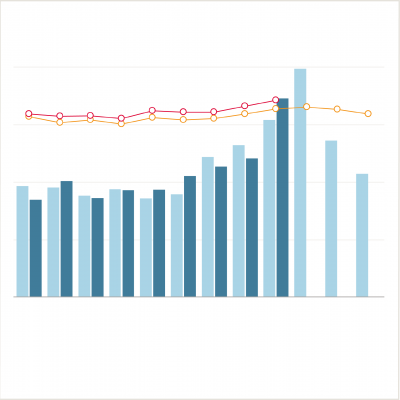Trends in people admitted from A&E and waiting after decision to admit
30 January 2018

- Fewer people attend A&E in winter than at other times of the year, but more of the people who do attend need to be admitted to hospital as an emergency.
- 19.1% of patients who attended a major A&E in 2002/03 were admitted, steadily rising to 27.5% in 2016/17. This trend has continued so far in 2017/18, with 30.0% of attendances at a major A&E leading to an emergency admission in December 2017.
- So far in 2017/18, the number of people waiting more than 4 hours from a decision to admit to being admitted to a bed has been similar to the same point last year.
The news in January has been full of stories about winter pressures on the NHS. Fewer people attend A&E in winter than at other times of the year, but more of the people who do attend need to be admitted to hospital as an emergency which adds to the pressure on front-line staff and hospital capacity.
The percentage of attendances at major A&E departments that resulted in an emergency admission has grown over time, despite recent research that suggests patients who are now being discharged from A&E would probably have been admitted a few years ago. 19.1% of patients who attended a major A&E in 2002/03 were admitted, steadily rising to 27.5% in 2016/17. This trend has continued so far in 2017/18, with 30.0% of attendances at a major A&E leading to an emergency admission in December 2017. More emergency admissions mean more pressure on inpatient beds.
Delays in admitting people from A&E to a bed have grown considerably in recent years. So far in 2017/18, the number of people waiting more than 4 hours from a decision to admit to being admitted to a bed has been similar to the same point last year. Figures for January 2018 will show whether this pattern has continued or been disrupted by the increased pressure from seasonal flu.
Work with us
We look for talented and passionate individuals as everyone at the Health Foundation has an important role to play.
View current vacanciesThe Q community
Q is an initiative connecting people with improvement expertise across the UK.
Find out more

